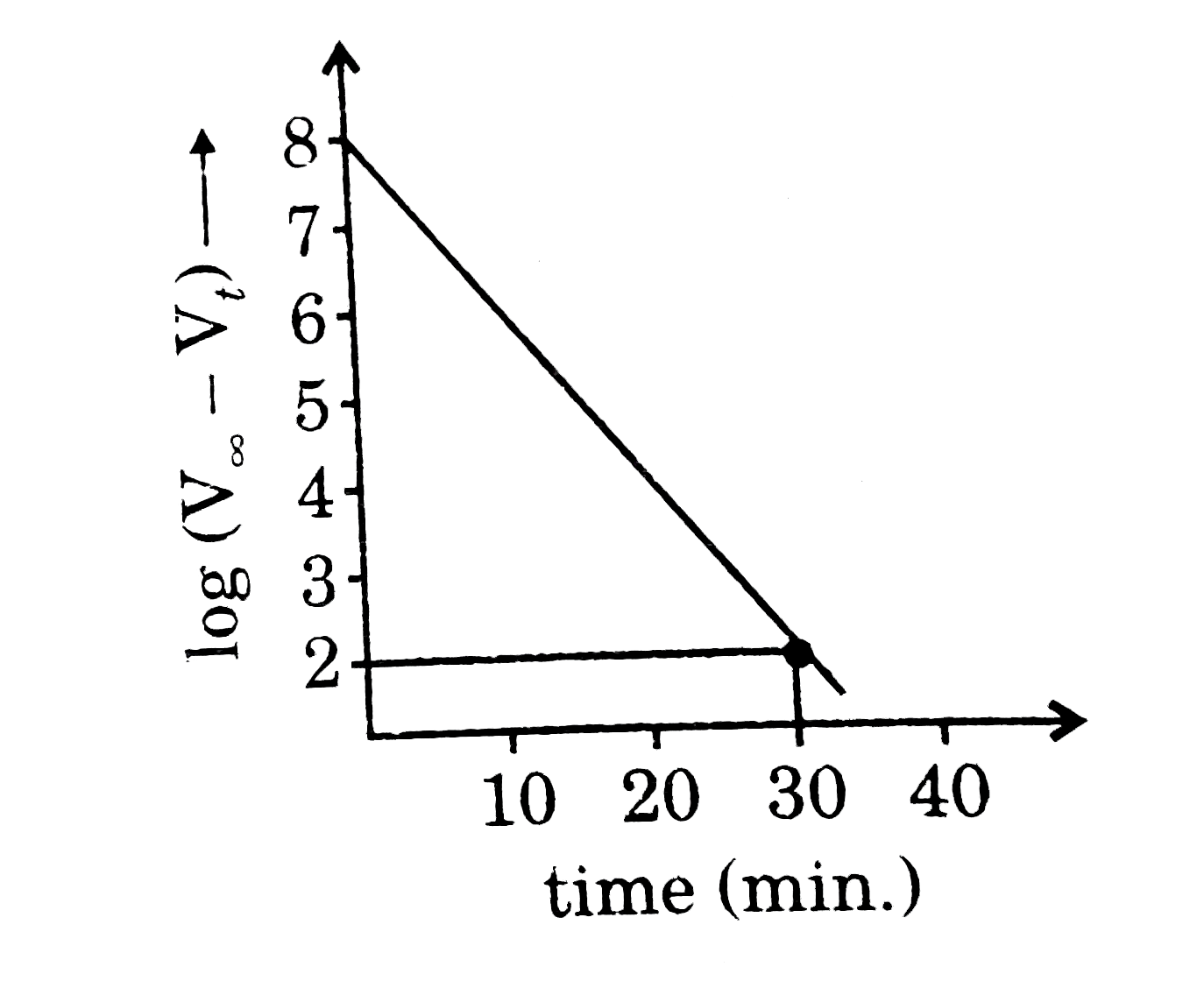The hydrolysis of sucrose was studied with the help of calorimeter and following data were
Collected time (min.):070∞observed rotation (degrees):4416.5−11
the time taken when reaction mixture wil be optically inactive ? (Given : In 2=0.7,in 3=1.1, in 5=1.6)
16 min
69.47 min
160 min
None of these
The correct Answer is:C
Step by step video, text & image solution for The hydrolysis of sucrose was studied with the help of calorimeter and following data were {:(,"Collected time (min.)",:0,70,oo),(,"observed rotation (degrees)",:44,16.5,-11):} the time taken when reaction mixture wil be optically inactive ? (Given : In 2=0.7,in 3=1.1, in 5=1.6) by Chemistry experts to help you in doubts & scoring excellent marks in Class 12 exams.
Updated on:21/07/2023Topper's Solved these Questions
- CHEMICAL KINETIC & NUCLEAR CHEMISTRYBOOK - NARENDRA AWASTHICHAPTER - CHEMICAL KINETIC & NUCLEAR CHEMISTRYEXERCISE - Level 1 (Q.3 To Q.32)
2 Videos
- CHEMICAL KINETIC & NUCLEAR CHEMISTRYBOOK - NARENDRA AWASTHICHAPTER - CHEMICAL KINETIC & NUCLEAR CHEMISTRYEXERCISE - Level 1 (Q.33 To Q.62)
3 Videos
- SURFACE CHEMISTRYBOOK - NARENDRA AWASTHICHAPTER - SURFACE CHEMISTRYEXERCISE - Level 3 - Assertion - Reason Type Questions
1 Videos
Similar Questions
Optical rotation of sucrose in 1 N Hcl at various times was found as shown below :
Time (sec)07.1818.027.05∞Rotation (deg)+24.09+21.7+17.7+15.0−10.74
Shwo that the inversion of scrose is a first order reaction
View SolutionFor the reaction A→ prouducts, the following data is given for a particular run.
time(min.):0515251[A](M−1):1248
Determine the order of the reaction.
View Solution
Knowledge Check
A→B first order reaction A is ooptical active and B is optically inactive. A series of experiment were conducted on a solution of A
Time060min∞optical rotation82∘77∘2∘
assume some imurity is present calculate the otical rotation for 5 hours.)
(Given in 1.066=0.064, e0.16=1.17)A60B30C20D120For a first order reaction A → B, A is optically active and B is optically inactive, and following experimental data were observed :
∣∣∣Time060 min∞Optical Rotation82∘22∘2∘∣∣∣
If some impurity, find optical rotation after 2 hours :A7∘B12∘C22∘D42∘For the first order reaction

Following observation is made: where Vt (in ml) is volume of N2 collected at time t and V∞ (in ml) is volume of N2 collected after a long time. what is the time taken (in minutes) for 75% reaction completion? (log 2=0.3)
 A2.5B0.5C3D10
A2.5B0.5C3D10
Cane sugar is gradualaly converted into dextrose and laevuloe by dilute acid. The rate of inversion is observed by measuring the polarisation angle, at various times, when the following results are obtained:
Time (min)010203040100∞Angle32.428.825.522.419.6−6.1−14.1
Show that the reaction is of first order. Calculate the value of t, when the solution is optically inactive.
View SolutionInverison of sucrose is studied by measuring the angle of rotation at any time t.
C12H22O11(Sucrose)+H2O(Glucose)H⊕−−→C6H12(Fructose)O6+C6H12O6
It is found that
(r∞−r0)∝a and (r∞−rt)∝,(a−x), where r0,rt, and r∞ are the angle of rotation at the start, at the time t, and at the end of the reaction, respectively. Form the following values calculate the rate constant and the time at which the solution is optically inactive.
∣∣∣Time (min)0.046.0∞Rotation of polarized light (degree)24.110.0−10.7∣∣∣
View SolutionAn optically active substance A is decomposing into optically active substance B and C as :
A.k=10−3min.−1−−−−−−−−−−→2B+C
the specific rotations of A,B and C are +40∘,+10∘and−30∘ per mole , respectively Initially A and C were present in 4:3 mole ratio After what time (in min), the sample becomes optically inactive?
[GivenIn75=0.34,In2013=0.43]
View SolutionThe optical rotation of cane sugar in 0.5 N lactic acid at 25∘C at various time intervals are given below :
Time0143511360∞(min)Rotation(.∘)34.50∘31.10∘13.98∘−10.77∘
Show that the reaction is of first order .
View SolutionIn the data given below, the observation p is missing
2 . 5 , 1 . 5, p, 1. 7, 2 . 5, 1. 3, 3 . 5
If the mean is 2 . 5 then the missing observation p will be
View Solution
